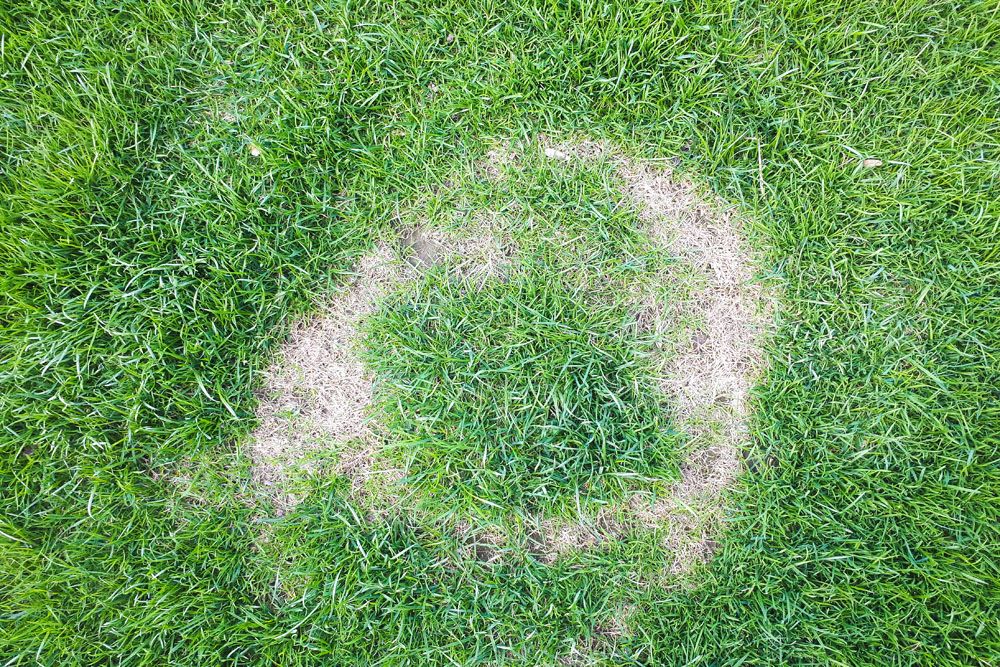
Summer Patch
Summer Patch 101: Diseases, Sings, and Symptoms (Causal fungus: Magnaporthiopsis poae)
Almost every lawn has a few brown spots now and then. But if your lawn is slow to develop, has wilting grass, and is dotted with uneven, straw-colored patches and rings that become larger over the season, you may have a summer patch.
The main cause of the summer patch is the fungus Magnaporthe poae. The disease’s hallmark symptoms are rings of infected grass that start reddish-brown and develop into a tan or light tint. The tan discolored patch’s center is usually green, giving rise to the term “frogeye patch.” Summer patch, also known as Poa patch, is a root disease that affects turf, residential lawns, grounds, and sports fields. In warm conditions, the disease first appears as small circular patches of slow-growing, wilted, and thinning grass. Patches develop into irregular, yellow to bronze-colored patches with diameters ranging from 6″ to 3′. Here are three main types of grass affected by the summer patch.
- Annual Bluegrass
- Kentucky Bluegrass
- Fine Fescues
Summer patch grows in sunlight, hot conditions—temperatures of 90 degrees or higher—and is typically found on shorter grass. Drought stress can worsen signs of root rot once it has developed. Excessive nitrogen treatments in the spring, nitrate-nitrogen forms, high pH, low mowing heights, and certain contact fungicides lead to disease spread.
Signs and Symptoms
Summer patches may begin as tiny circular patches on annual bluegrass, putting greens, tees, and fairways and grow to bigger patches as the fungus spreads. Large areas of disease will frequently emerge unexpectedly, with little sign of past disease activity. Patches may cluster and kill huge sections of the lawn in extreme situations. Summer patch-diseased annual bluegrass becomes yellow at first, then brown as afflicted plants die.
Prevention
Avoid summer patches by not cutting more than two-thirds of the length of the grass when mowing. In the summer, avoid applying nitrogen-based fertilizer to your soil. Watering gently and regularly in warm temperatures is another bad habit to avoid since it dampens the shallow regions where magnaporthe poae lives, promoting its growth. Aeration of the soil is necessary to avoid thatch accumulation and promote drainage. Fungicides are frequently used to fight the spread of summer patches since they may inflict significant damage in a short period of time. There are chemical controls for summer patches, such as fungicides with active ingredients (azoxystrobin, fenarimol, and propiconazole).
Finally, with a summer patch of grass, maintain the soil pH slightly acidic. For lawns that have previously suffered from summer patch disease, experts advise a pH range of 5.8 – 6.0. Summer patch disease is more damaging to a lawn when the pH is in the optimal range or higher. It is also not suggested to allow the pH of the soil to go too low. If the pH goes too low, the grass plants do not properly absorb fertilizer nutrients and suffer from nutritional shortages. Just to be extra careful, do a soil ph. test for the garden.
